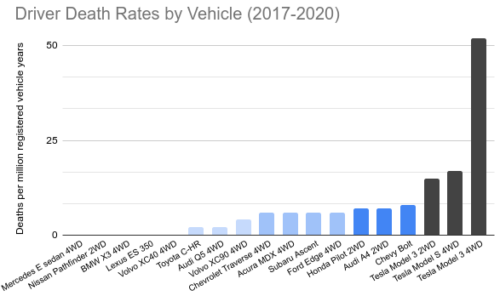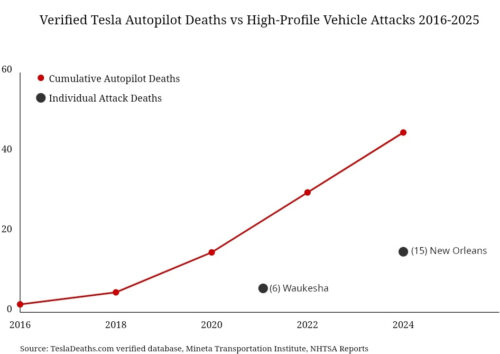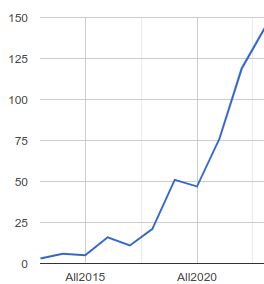Elon Musk used the unmistakable Hitlergruß “Sieg Heil” (Nazi) salute today at a political rally.
This Nazi salute is banned in many countries, including Germany, Austria, Slovakia, and the Czech Republic as a criminal offense. The gesture remains inextricably linked to the Holocaust, genocide, and crimes of Nazis. Such illegal use or mimicry of Nazi gestures continues to be a serious matter that can result in criminal charges due to their connection with hate speech and extremist ideologies.
Elon Musk’s calculated public display of Nazi symbolism has been a long road culminating in this “Sieg Heil” gesture on a political stage. And it represents a disturbing parallel to historical patterns of media manipulation and democratic erosion. The following analysis, based on this blog warning readers for years about Musk’s growing displays of Nazism, examines his very clear Nazi salute through a lens of historical scholarship on propaganda techniques and media control.
As noted by Ian Kershaw in “Hitler: A Biography” (2008), the Nazi seizure of control over German media infrastructure occurred with remarkable speed.
Within three months of Hitler’s appointment as Chancellor, the Reich Ministry of Public Enlightenment and Propaganda under Joseph Goebbels had established near-complete control over radio broadcasting. This mirrors the rapid transformation of Twitter following Musk’s acquisition, where content moderation policies were dramatically altered within a similar timeframe to promote Nazism.
Many people were baffled why American and Russian oligarchs would give Elon Musk so much money to buy an unprofitable platform and drive it towards extremist hate speech. Today we see that was simply political campaign tactics to destroy democracy. Of course it sunk money. Of course it was a business disaster. Does anyone really think calculating the value of a bomb dropped on democracy is only calculated by Russia in terms of the explosive materials lost on impact?
Copious reporting informs us how the Reich Broadcasting Corporation achieved dominance through both technological and editorial control:
To maximize influence, formerly independent broadcasters were combined under the policy of Gleichschaltung, or synchronization, which brought institutions in line with official policy points. Goebbels made no secret that “radio belongs to us.” The only two programs were national and local information. They began with the standard “Heil Hitler” greeting and gave plenty of airtime to Adolf Hitler.
This parallels the documented surge in hate speech on Twitter post-acquisition. Under the thumb of Elon Musk, the platform exploded with Nazism as researchers noted increased even in the first months. His response to those who cite evidence of this has been to angrily threaten those researchers and erect velvet ropes and paywalls. Staff remaining at Twitter who moderated speech or otherwise respected human life were quickly fired and replaced with vulnerable sycophants, just a few roles left designed to be mere cogs in a digital reich.
The Nazis understood that controlling the dominant communication technology of their era was crucial to reshaping public discourse, as Jeffrey Herf argues in “The Jewish Enemy” (2006). Radio represented a centralized broadcast medium that could reach millions simultaneously. Herf notes:
The radio became the voice of national unity, carefully orchestrated to create an impression of spontaneous popular consensus.
The parallel with social media platform control is striking. However, as media historian Victoria Carty observes in “Social Movements and New Technology” (2018), modern platforms present even greater risks due to:
- Algorithmic amplification capabilities
- Two-way interaction enabling coordinated harassment
- Global reach beyond national boundaries
- Data collection enabling targeted manipulation
The normalization of extremist imagery often comes within a shrewd pattern of “plausible deniability” through supposedly accidental or naive usage.
The 2018 incident of Melania Trump wearing a pith helmet – a potent symbol of colonial oppression – in Kenya provides an instructive parallel. Just as colonial symbols can be deployed with claims of ignorance about their historical significance, modern extremist gestures and symbols are often introduced through claims of misunderstanding or innocent intent.
So too Elon Musk denies understanding any symbolism or meaning to words and actions, while also regularly signaling he is the smartest man in any room. This contradiction is not accidental, as it supercharges the notion of normalization by someone who uses his false authority to promote Nazism.
Martin M. Winkler’s seminal work “The Roman Salute: Cinema, History, Ideology” (2009) provides crucial insight into how fascist gestures became normalized through media and entertainment. The “Roman salute,” which would later become the Nazi salute, was actually a modern invention popularized through theatrical productions and early cinema, demonstrating how mass media can legitimize and normalize extremist symbols by connecting them to an imagined historical tradition.
Winkler’s research shows how early films about ancient Rome created a fictional gesture that was later appropriated by fascist movements precisely because it had been pre-legitimized through popular culture. This historical precedent is particularly relevant when examining how social media can similarly normalize extremist symbols through repeated exposure and false claims of historical or cultural legitimacy.
Perhaps most concerning is Elon Musk’s pattern of normalization that emerges, right on cue. Richard Evans’ seminal work “The Coming of the Third Reich” (2003) details how public displays of extremist symbols followed a predictable progression:
- Initial testing of boundaries
- Claims of misunderstanding or innocent intent
- Gradual escalation
- Open displays once sufficient power is consolidated
The progression from Musk’s initial “jokes” and coded references (Tesla opens 88 charging stations, Tesla makes 88 kWh battery, Tesla recommends 88 K/h speed, Tesla offers 88 screen functions, Tesla promotes 88 ml shot cups, lightning bolt imagery… did you hear the dog whistles?) to rebranding Twitter with a swastika and giving open Nazi salutes follows this pattern with remarkable fidelity.
Modern democratic institutions face unique challenges in responding to these threats.
Unlike 1930s Germany, today’s media landscape is dominated by transnational corporations operating beyond traditional state control. As Hannah Arendt presciently noted in “The Origins of Totalitarianism” (1951), the vulnerability of democratic systems often lies in their inability to respond to threats that exploit their own mechanisms of openness and free discourse.
The key difference between historical radio control and modern social media manipulation lies in the speed and scale of impact, similar to how radio rapidly and completely displaced prior media. Hitler poured state money into making radios as cheap as possible to collapse barriers to his hateful, violent incitement propaganda spreading rapidly.
Yet radio still had reach constraints in physical infrastructure that could be managed and countered by state authorities. Social media platforms are on an Internet designed to route around such obstacles, which Russia bemoans as it clocks over 120 “national security” takedown notices sent every day to YouTube. Internet platforms can be transformed almost instantly through policy changes and algorithm adjustments both for and against democracy. This makes the current situation of extreme course change potentially even more dangerous than historical precedents. Information warfare long ago shifted from the musket to the cluster bomb, but defensive measures for democratic governments have been slow to emerge.

The parallel between Hitler’s exploitation of radio and Musk’s control of Twitter raises crucial questions about platform governance and democratic resilience. As political scientist Larry Diamond argues in “Democracy in Decline” (2016), social media platforms have become fundamental infrastructure for democratic discourse, making their governance a matter of urgent public concern.
The progression from platform acquisition to public displays of extremist symbols suggests that current regulatory frameworks are inadequate for protecting democratic institutions from technological manipulation. This indicates a need for new approaches to platform governance that can respond more effectively to rapid changes in ownership and policy.
But it is maybe too late for America, like Hearst realized in 1938 on Kristallnacht how it was too late for Germany and he never should have been promoting Nazism in his papers.
The historical parallels between 1930s media manipulation and current events are both striking and concerning. While the technological context has changed, the fundamental pattern of using media control to erode democratic norms remains consistent. The speed with which Twitter was transformed following its acquisition, culminating in its owner’s public display of Nazi gestures, suggests that modern democratic institutions may be even more vulnerable to such manipulation than their historical counterparts.
Of particular concern is how social media’s visual nature accelerates the normalization process that Winkler documented in early cinema. Just as early films helped legitimize what would become fascist gestures by presenting them as historical traditions, social media platforms can rapidly normalize extremist symbols through viral sharing and algorithmic amplification, often stripped of critical context or warnings.
Future research should focus on developing frameworks for platform governance (e.g. DoJ for laws, FCC for wireless) that can better protect democratic discourse while respecting fundamental rights. As history demonstrates, the window for effective response to such threats may be remarkably brief.




